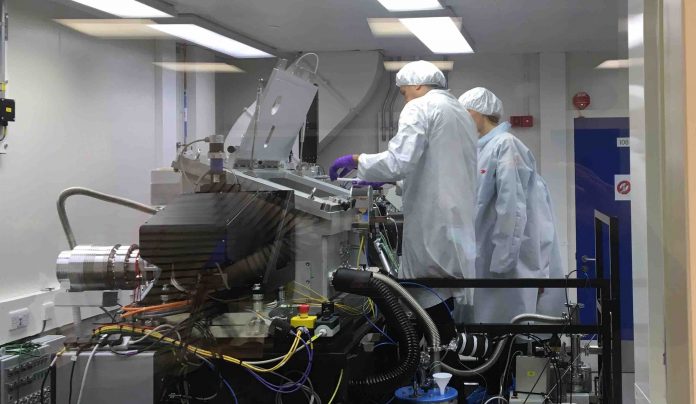PhD student Lisa Curti, jointly funded by Diamond and University of Leeds has had her first paper published in the prestigious Nature Portfolio journal ‘Communications Earth & Environment’. The paper looks at what controls the preservation of organic carbon in the natural environment because of its importance in the global carbon cycle, which controls Earth’s climate. The paper named “Carboxyl-richness controls organic carbon preservation during coprecipitation with iron (oxyhydr)oxides in the natural environment” shows for the first time that carboxyl groups can enhance carbon preservation by strongly sticking to iron mineral surfaces and once linked together carbon can be locked away from the atmosphere for hundreds to thousands of years.
Caroline Peacock, Lisa’s co-supervisor and Professor of Biogeochemistry at University of Leeds said:
Lisa’s work shows how carbon chemistry plays a key role in how well it sticks to iron minerals in soils and sediments, and provides a platform for us to understand the interplay between carbon chemistry and minerals in carbon sequestration and climate. We could not have achieved this fantastic result without access to a world leading large scale science facility like Diamond.
Lisa Curti is one of 281 joint PhD’s sponsored by Diamond since its inception. There are currently 111 PhD’s under co-supervision in a well-established network of over 60 universities and institutions including the University of Leeds, the Natural History Museum and the UK’s national neutron and muon source (ISIS).
Diamond’s Science Group Leader for Imaging, Dr Paul Quinn, commented:
We invest around £1m each year in our PhD and undergraduate programmes, and students like Lisa demonstrate the powerful return UK science is achieving with results like these. Our PhD’s are delivering a range of really innovative science and ground-breaking results.
Lisa explains that despite many years of research, the exact mechanisms that stick carbon and minerals together are far from understood because of the different chemical and physical processes involved and the variety of different organic molecules and functionalities that can be found in nature. This work shows for the first time that carbon that is rich in carboxyl groups sticks more strongly to iron minerals in soils and sediments, and is subsequently stabilised against degradation.
She said:
Carboxyl-richness could provide an important control on organic carbon preservation in the natural environment. This is really exciting because carbon preservation over very long timescales in sediments effects Earth’s long-term climate, but carbon preservation over shorter decadal to centennial timescales in soils plays an important role in Earth’s short-term climate, and finding new ways to increase the storage of carbon in soils might help offset current climate change.
One of her co-authors and co-supervisor, Dr Burkhard Kaulich, Principal Beamline Scientist at the Diamond I08 beamline, concludes:
Working with universities like Leeds on joint studentships is a great opportunity to connect with the needs of the user community whilst skilling up students and giving them the best start possible in their research career. Lisa is already a very professional scientist in her very early career, and we all look forward to promoting Lisa further in her future science adventures. Lisa helped us with her ambition and curiosity to bring synchrotron research at our beamlime to the limit and steadily improve its performance for her science.
Lisa is currently finishing her PhD, and has been working on Diamond beamline I08, with her co-supervisor at Diamond Burkhard Kaulich, and support from Majid Kazemian. Both are co-authors on the paper.
Commenting on her joint PhD between Diamond and University of Leeds, Lisa said:
It has been a great opportunity for me to work at Diamond and complement my research with cutting-edge synchrotron techniques. I really enjoyed my time spent at Diamond, despite the need for me to wear a full protective suit complete with a scientific shower cap in the experiments cabin, whilst my supervisors and colleagues looked on with amusement! I hope to have the chance to work at Diamond again in the future and to look even further into carbon-mineral associations.















